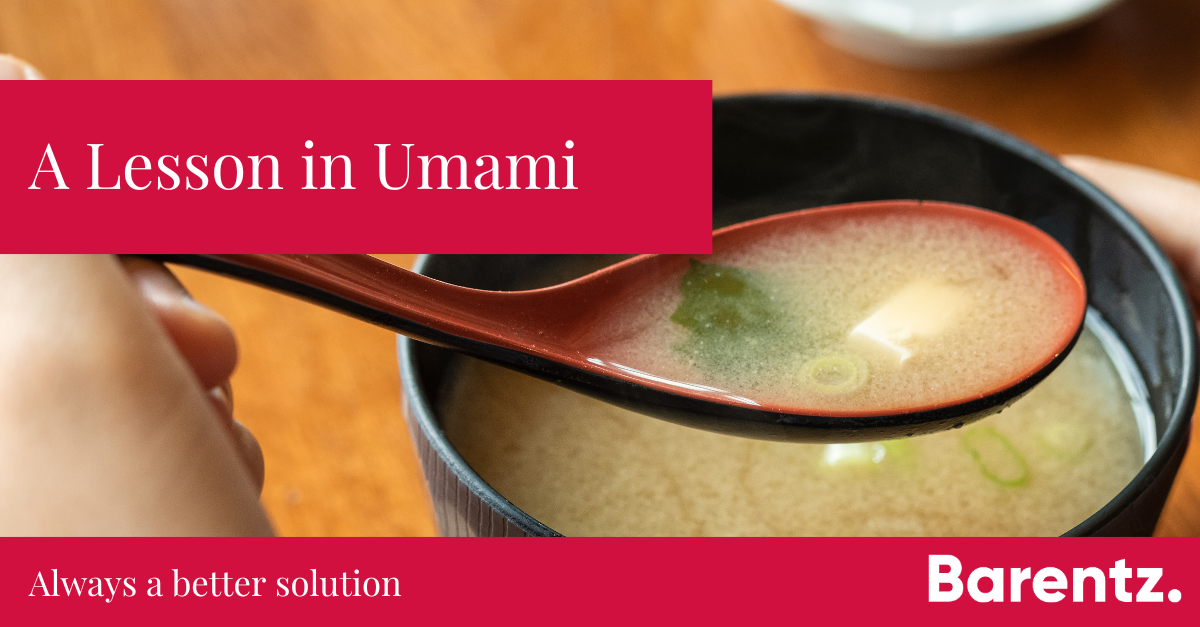Human Nutrition
A Lesson in Umami
Umami is often referred to as the “fifth taste”, alongside sweet, sour, bitter, and salty. It is a Japanese term that translates to “pleasant savory taste” and is recognized as a distinct flavor that can be found in many different foods. In this article we explore what umami is, where is comes from, and why it is so important in food.
What is Umami?
Umami is a taste sensation that is often described as savory, meaty, or brothy. It is a subtle flavor that is difficult to describe but once you have experienced it, you will never forget it. Umami is caused by the presence of glutamate, an amino acid that is found in many different foods, including meat, fish, cheese, tomatoes, mushrooms, and soy sauce. Umami was first identified by Japanese scientist Kiklunae Ikeda in 1908. Ikeda noticed that many of his favorite foods, such as dashi (a broth made from dried fish), had a distinct flavor that was different from the traditional four tastes. He went on to identify glutamate as the compound responsible for this unique taste.
Where Does Umami Come From?
Umami comes from glutamate, an amino acid that is found in many different foods. Glutamate is naturally occurring, but it can also be created through the fermentation process. This is why foods like soy sauce, miso and cheese have such a strong umami flavor. Now there is a way to increase umami in certain foods by adding Camlow™ Umami natural taste enhancement, which provides a strong umami effect while creating balanced taste profiles.
In addition to glutamate, there are other compounds that can enhance umami flavor of foods. These include inosinate and guanylate, which are found in foods such as fish, meat, and mushrooms. Camlow™ Umami, for instance, is derived from white button mushrooms and provides a natural source of umami.
Why is Umami Important in Food?
Umami is an important flavor in food because it can enhance the overall taste of a meal. It is often used to balance out other flavors, such as sweetness or bitterness. Umami can also add depth and complexity to a dish, making it more satisfying and enjoyable to eat.
There are many was to add umami to food, one of these is by adding Camlow™ Umami natural taste enhancer to easily boost taste profiles and improve mouthfeel. Additionally, umami can be achieved by using ingredients that are naturally high in glutamate, such as tomatoes, mushrooms, and soy sauce. Another way to add umami is to use ingredients that are high in inosinate or guanylate, such as fish sauce, anchovies, or parmesan cheese.
Umami can also be achieved through cooking techniques such as roasting, caramelizing, and fermenting. Roasting vegetables, for example, can enhance their natural umami flavor. Caramelizing onions can bring out their umami flavor, while fermentation can create new umami compounds in foods such as soy sauce and miso.
Umami is a unique and important flavor that is often overlooked in foods. It is a subtle taste that can enhance the overall flavor of a meal and make it more satisfying to eat. If you are looking to naturally boost umami in your food product, learn more about Camlow™ Umami by reaching out to marketing@barentz.ca.

